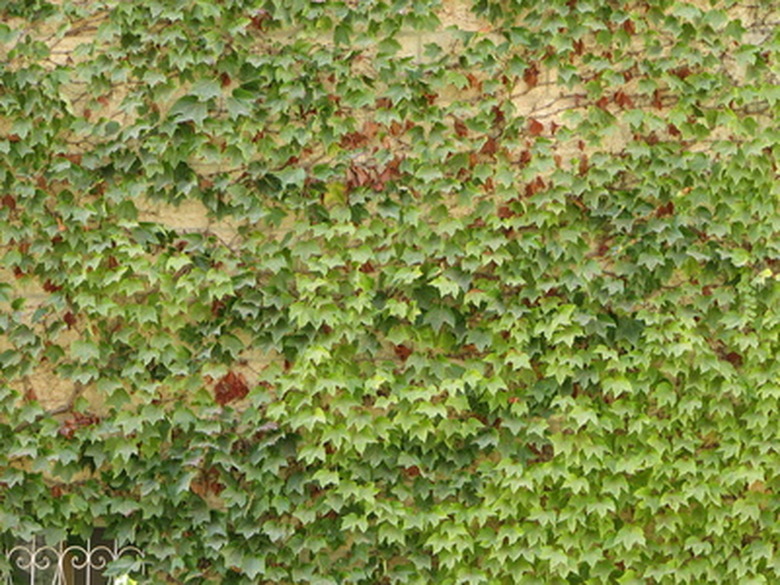Boston Ivy Diseases
Boston ivy is a clinging vine with holdfasts like suction cups that attach to practically any solid object. The ivy is suited for United States Department of Agriculture (USDA) Plant Hardiness Zone 4 climates. An aggressive climber, the leaves of the Boston ivy are dark green and glossy in the summer, turning crimson, burgundy and scarlet in the fall. The ivy withstands urban conditions, however it is susceptible to certain fungal diseases.
Leaf Spots
Leaf spots are caused by a fungus. The diseases first present as misshapen or round dark spots, either brown or gray, which on closer inspection contain fungal bodies. The spots sometimes merge over the entire leaf surface. The leaves then turn yellow, according to "The Encyclopedia of Gardening" by the American Horticultural Society. Leaf spot is mainly a cosmetic disease and the health of the ivy is not affected. To control the disease, remove all affected parts, destroying or burning leaves that have fallen.
- Boston ivy is a clinging vine with holdfasts like suction cups that attach to practically any solid object.
- An aggressive climber, the leaves of the Boston ivy are dark green and glossy in the summer, turning crimson, burgundy and scarlet in the fall.
Powdery Mildew
Powdery mildew is another fungal disease that affects Boston ivy. Symptoms include the presence of white spots on the leaves and stems, according to The Connecticut Agricultural Experiment Station. The leaves then turn brown and wither. To control the disease, remove any of the ivy's affected parts and thin the plants as necessary. Fungicide can be used as soon as the disease presents.
Sooty Mold
Boston ivy is susceptible to sooty mold, another fungal disease. The surface of the branches, twigs and leaves become covered in a black fungus. The fungus attaches itself to the plant by way of a clear, sticky substance called honeydew left behind by insects, according to Cornell University. The fungus then feeds on the honeydew and sprouts, eventually covering the plant. Boston ivy is particularly threatened because the fungus prevents the plant from photosynthesizing. To treat the plant, remove any mold with water and spray the ivy with insecticide to control insects.
- Powdery mildew is another fungal disease that affects Boston ivy.
- The surface of the branches, twigs and leaves become covered in a black fungus.
References
- "The Encyclopedia of Gardening"; American Horticultural Society; 1994
- The Connecticut Agricultural Experiment Station: Boston Ivy (Parthenocissus)
